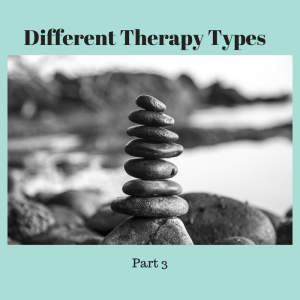This is the third of four blog posts, summarizing major therapeutic styles. Some therapeutic styles are based upon and incorporate other styles. (See posts dated June 19, 2018 and July 3, 2018 for more information.)
Motivational Interviewing – The focus of Motivational Interviewing is to help clients resolve feelings of ambivalence and find internal motivation to make changes. It has been found helpful in treating chronic health issues and substance abuse. It works well for those who are uncertain of making changes. Teenagers and adults benefit from this therapy type.
Narrative Therapy – In Narrative Therapy, the client is viewed as separate from his/her problem, helping to build distance between the individual and the problem. Clients will explore how identifying with the problem is protective and whether the problem is serving the individual well currently. The outside perspective allows clients to “rewrite” their story. The therapist will help the client discover strengths and recognize that he/she is the expert on his/her own life, which in turn helps the client write a different story.
NeuroAffective Relational Model (NARM) – This strength-based model helps clients tap into the parts of their lives that are already functional while bringing an awareness to the parts that are disorganized and dysfunctional. The NARM model focuses on: building connection, exploring identity, being in the present moment, and regulating one’s nervous system. Client’s will explore their connections with self and others, learn to recognize needs, build trust and healthy interdependence, establish healthy boundaries, and become open to a loving relationship. Client’s will learn to recognize and tap into strengths in order to move forward with their individual goals.
Parent-Child Interaction Therapy – This therapy combines play therapy and behavioral therapy. It is used with young children (aged 2 to 7) and their caregivers. The interventions teach adults specific skills they can use to improve interactions with children. It has been found effective for children who have experienced trauma, those on the autism spectrum, as well as helping with disruptive behavior. In addition, the evidence-based interventions can be used to prevent child abuse and decrease adult antisocial and criminal behaviors.
Person-Centered Therapy (also called Client-Centered Therapy) – This approach allows clients to lead their therapy and discover their own solutions. The therapist compassionately facilitates discussions, provides a non-judgmental space for clients to process their thoughts and feelings, and encourages/supports the client in finding his/her own path to self-growth. Person-Centered Therapy is helpful in building self-confidence, increasing a sense of identity, and facilitating the growth of interpersonal relationships. Many therapists use Person-Centered Therapy as the foundation of their work. It is helpful with a variety of mental health problems including abuse, anxiety, bipolar disorders, depression, grief, stress, etc. The client and therapist are partners and work together to achieve the client’s goals.
Play Therapy – This therapy was developed to help 3 to 12-year-old children express their thoughts and emotions through play. Therapeutic play allows the child to freely express his/herself while the therapist observes the child’s choices and decisions. The goal of Play Therapy is to help children learn how to express themselves in a healthy manner. It is useful in helping children learn to communicate, change behaviors, and learn problem-solving skills. Play Therapy has been helpful for children who have experienced traumatic events, upsetting changes in environment, academic and social problems, attention issues, behavioral problems, learning disabilities, anxiety, depression, grief, anger, and for those who are on the autism spectrum.
Prolonged Exposure Therapy – Developed as a treatment for Posttraumatic Stress Disorder (PTSD), this therapeutic intervention helps clients re-engage with life. Clients learn skills to stop avoiding the thoughts, feelings, and things associated with the trauma. It strengthens the client’s ability to recognize safe and dangerous situations and decreases PTSD symptoms. Prolonged Exposure Therapy is useful for anyone who experienced a traumatic event. Because discussing the traumatic event is part of the treatment, clients may experience moderate distress during treatment. The distress experienced is generally brief and the treatment often helps significantly reduce trauma-related symptoms such as unwanted thoughts, nightmares, feelings of hopelessness, depression, anxiety, and hypervigilance.
Reference: https://www.psychologytoday.com/us/types-of-therapy

